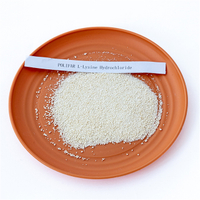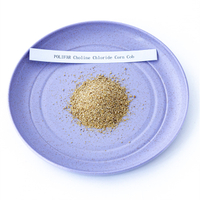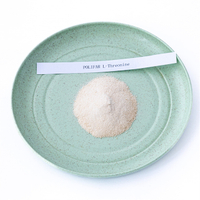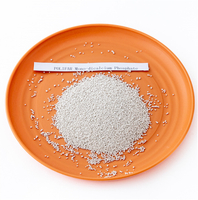Views: 0 Author: Site Editor Publish Time: 2023-12-13 Origin: Site








Whenever we pick up food from the supermarket shelves, we can see the names of preservatives on the labels. There is no doubt that preservatives maximize the freshness and nutrient content of food. But do you occasionally worry about the after-effects of preservatives? In this article, you will learn more about preservatives.
As the name suggests, a food preservative is a food additive that prevents food from rotting and spoiling. Preservatives can have an effect on the texture, taste, color, and nutritional value of food, extending its shelf life.
Food preservatives play a vital role in the food industry, and their role is mainly reflected in the following aspects:
Exten the shelf life of food: food preservatives can inhibit the growth and reproduction of microorganisms in food and extend the shelf life of food. This is critical for food storage, transportation, and distribution, reducing food loss and waste while allowing consumers to enjoy fresh food for longer. For example, sodium propionate can prevent mold and inhibit the re-fermentation process in soy sauce, thereby extending its shelf life.
Maintaining food quality and taste: Some food preservatives can prevent browning, deterioration, and hardening of the texture of the food, thus preserving the original flavor and taste of the food. This is especially important for perishable foods such as fruits, vegetables, and meats. For example, ascorbic acid prevents foods from browning, making them look more appealing. Sodium lactate prevents the meat from dehydrating, thus keeping it fresh tasting, and flavorful.
Reduced Risk: Food preservatives reduce the risk of food poisoning by inhibiting the growth of bacteria, molds, and yeasts in food. This is essential for food safety and consumer health, especially for people who are allergic to specific ingredients or who require high preservation conditions for their food.
Expanding the sales range of food: With food preservatives, even out-of-season food can be grown in other seasons with the help of preservatives, thus meeting the demand for a variety of ingredients and enriching dietary diversity, thus expanding the sales range of food and increasing the revenue of the food industry.
Extra supply of nutritional value: Some preservatives can not only extend the shelf life of food but also supply extra specific nutritional value to make the food more nutritious. This can provide more diversified nutritional choices for some specific groups of people.
The benefits of food preservatives are numerous, as shown in the following areas:
The use of food preservatives ensures food diversity. Even non-seasonal foods can be grown in other seasons with the help of preservatives, thus meeting the demand for a wide range of ingredients and enriching dietary diversity.
Through the use of preservatives, the shelf life of food is extended, avoiding the situation where food spoils and has to be thrown away due to a short storage time limit. This not only helps reduce food waste but also enables people to enjoy food better and conserve resources.
Some preservatives reduce the health risks associated with food by preventing some of the ingredients in the food from hurting the body. This is especially important for some people who are allergic to specific ingredients or who require high preservation conditions for food.
Some preservatives not only extend the shelf life of food but also supply additional specific nutritional value to make the food more nutritious. This can provide more diversified nutritional choices for some specific groups of people.
To summarize, the use of food preservatives brings obvious benefits in several aspects, providing convenience and protection for the production, storage, and consumption of food.
What we need to be aware of is that the use of preservatives in large quantities or over a long period can also be harmful to our health. Common negative effects are allergies; hyperactivity in children; the possibility of obesity; respiratory problems; cardiovascular problems; digestive problems, and so on.
Food preservatives are categorized into natural and artificial preservatives. The most common natural preservatives are salt and sugar, while the commonly used artificial preservatives are:
1. Potassium sorbate: with high safety, it is widely used in jams, pastries, alcoholic beverages, cheese, and other foods. It can effectively inhibit the growth of microorganisms in food and extend the shelf life of food;
2. Sodium benzoate: it belongs to acidic preservatives, and can play a better inhibiting role when the pH range is between 2.5-4.0. It is often used in the preservation of various acidic foods;
3. Sodium propionate: It is suitable for use in foods such as pastries, bread, and soy products. In an acidic environment, it has a strong inhibition effect on yeast, molds, etc., and can effectively extend the shelf life of these foods;
4. Lactobacillus peptide: completely non-toxic and very stable, with good heat and acid resistance. It can be widely used in dairy products, meat products, convenience foods, and other foods, playing a good role in preservation;
5. Natamycin: It is mainly used in dairy products, meat products, and other foods to prevent the growth of molds and avoid food spoilage, to keep the food fresh and safe.
In addition to the above artificial food preservatives, there are many varieties of food preservatives, such as calcium propionate, nitrite, butyl hydroxy anisole, and so on.
People always naturally feel that natural things are safer, so are natural food preservatives necessarily safer than artificial ones?
The biggest difference between natural preservatives and synthetic preservatives is their source. Natural preservatives are taken from plants and animals in nature, whereas synthetic preservatives are made by man. Natural preservatives are therefore subject to the problem of raw material limitations. The composition may change depending on the environment in which the plant grows, and then the effect of the preservative may not be the same. Artificial preservatives are subject to testing and regulation in various countries, they have no raw material limitations, and the production process is much more standardized, so there is almost no difference in the effectiveness of their use.
In conclusion, both natural and artificial preservatives need to pass strict evaluation criteria as well as restrictions on the scope and limit of use to ensure safe consumption.
Generally, foods are labeled on the back of the package with specific ingredients and listed in order of content. Usually, preservatives do not appear at the top of the list because most foods contain only small amounts of preservatives, and the FDA emphasizes the need for manufacturers to include not only the name of the preservative but also the purpose for which it is used. For example, a food label might say "sulfites, used as a preservative."
Apart from checking the ingredient list on the label to find out the ingredients of food preservatives added to food, are there other ways to know the ingredients of food? There are three other ways to detect preservative ingredients in food.
Method 1: Chromatography: We can put the food into a solution or suspension in a medium to separate the food, and when the food ingredients are successfully separated, we can use a detector to detect the specifics of the ingredients.
Method 2: Spectrophotometry: When a beam of light passes through the sample, the compounds in solution absorb, transmit, or reflect light of a specific wavelength on the electromagnetic spectrum.
Method 3: Electroanalytical methods: With this method, a point, charge or current can determine the concentration of a chemical or characterize the reaction of a chemical.
The demand for food preservatives has further increased with the shift in lifestyles and dietary habits, and increased demand for processed foods, instant food products, and others. The market for this segment is also expected to expand by leaps and bounds as users' understanding of preservatives has deepened their requirements have further increased, and the ingredients of preservatives are being driven to upgrade and iterate.
According to a report by Rationalstat LLC, the global food preservatives market is expected to be valued at USD 3.5 billion in 2023 and is projected to reach USD 4.3 billion by 2030, growing at a CAGR of over 3%.






